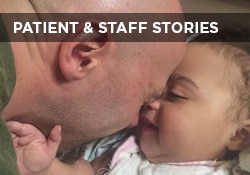This website uses cookies so that we can provide you with the best user experience possible. Cookie information is stored in your browser and performs functions such as recognising you when you return to our website and helping our team to understand which sections of the website you find most interesting and useful.
Pain Management – HCAHPS
While many advances have been made in pain management, the resulting pharmaceutical solutions come with a list of side effects, both physical and economic. And, there has yet to be an established standard.
It is well known that a chaotic environment can contribute to stress. More than generic stress, a distracting, uncomfortable, and impersonal environment can also contribute to an intensification of pain
Nightingale theorized that creating an environment conducive to restoration allows patients to heal.
Managing Pain
Gate Control Theory of Pain (Melzac, 1968) states, “Pain can be treated not only by trying to cut down the sensory input by anesthetic block, surgical intervention and the like, but also by influencing the motivational-affective and cognitive factors as well.”
The interface between patients and their environment is both sensory and cognitive. A patient environment that is comforting, minimizes distractions, and provides positive distractions is a proactive component in managing pain.
HCAHPS Survey
In the current HCAHPS survey, there are no questions that directly ask about pain or pain control. However, all other questions will be informed by a patient’s trust in how their suffering is minimized. Most patients know that being ill is most often uncomfortable or painful. However, there are many ways to ensure that the pain is not worsened and that they are being both cared for and cared about.
For a patient to engage meaningfully about their personal experience requires time, place, and engagement by the staff. And, it is the environment that can create an opportunity for this important patient-caregiver dialogue.
Under-treatment of pain is often caused by under-reporting. And for a patient to share their own suffering requires a trusting and therapeutic engagement with the care team.
The C.A.R.E. Channel provides a soothing and trusting backdrop to support personal conversations so critical to effective care.
Resources
Here are some resources you can use to help with pain management in your hospital:
- Palliative Care and C.A.R.E. whitepaper by Dr. Susan E. Mazer
- Whole Person Care and C.A.R.E. whitepaper by Dr. Susan E. Mazer
- Today’s Noise is Tomorrow’s HCAHPS Score blog post by Dr. Susan E. Mazer
-
How Can Patients Be More Involved in Their Pain Management? blog post by Dr. Susan E. Mazer
Also, check out these other searchable research databases.
If you’d like to have Dr. Susan E. Mazer speak at your next meeting or conference about creating a healing environment, contact us.










